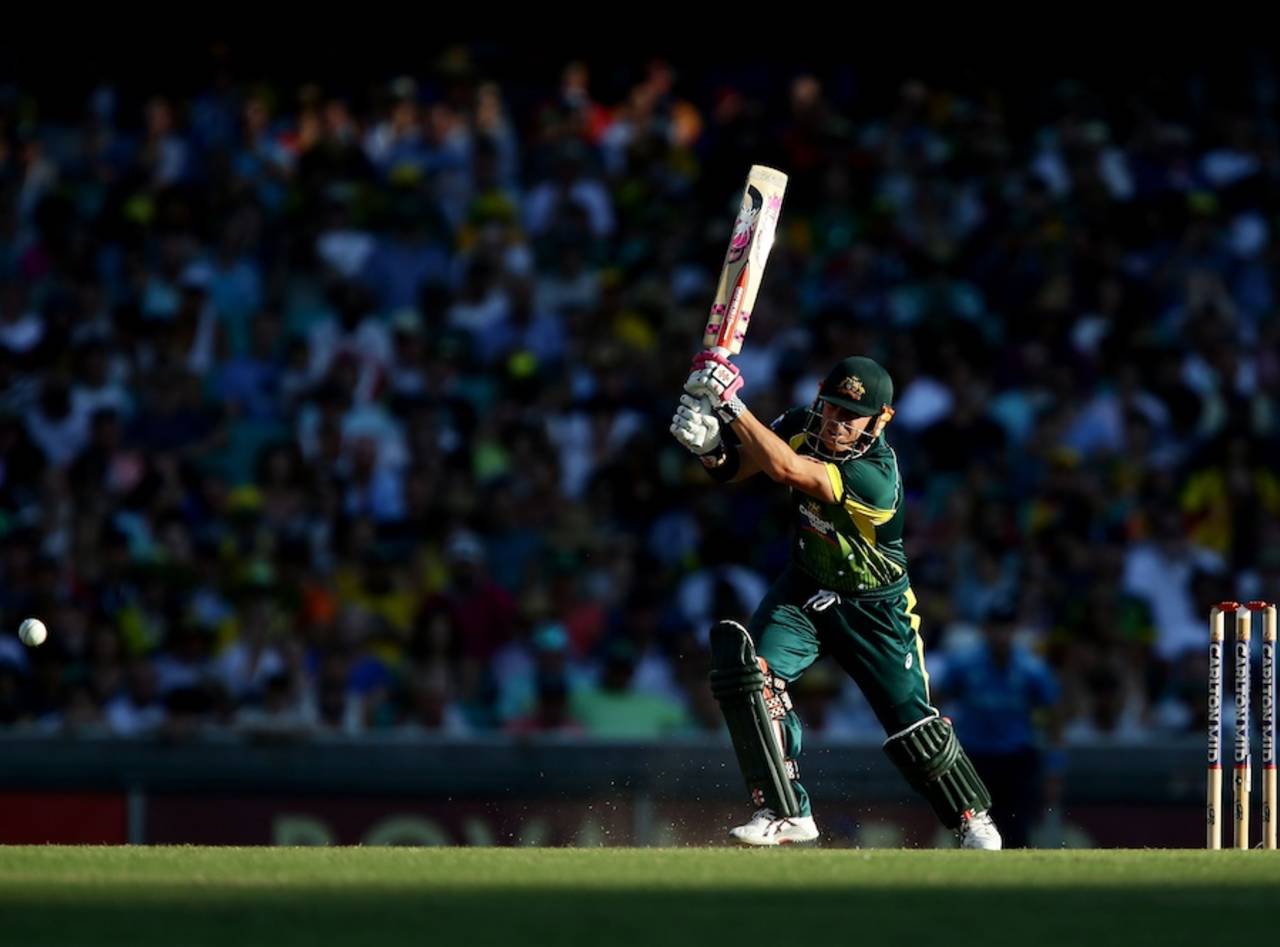The bigger they come, the more they hurt
It's time to restrict the thickness of bats to prevent injuries to bowlers and umpires, and mis-hit boundaries
Ian Chappell
08-Feb-2015

Balls race off modern bats at high speeds and prove a danger to the bowler and the umpire • Getty Images
If cricket captains performed like the ICC they would be out of a job in no time.
At long last the ICC has decided there's a problem with bats. They are being hailed as too good and disturbing the balance between bat and ball. This, combined with the fact that the ICC also recently decreed that shorter boundaries are contributing to the problem, is a classic case of being way behind the game.
If a cricket captain isn't at least two overs ahead of the game he's in big trouble. The ICC is fortunate there's no selection process to decide its fate following a spate of bungling.
It was similarly tardy in reacting to the plethora of dodgy bowling actions that plagued the game. After a couple of decades of allowing kids to copy all kinds of weird and wonderful deliveries, most of which would have been deemed "pelting" in bygone eras, it is now in the process of cleaning up bowling actions.
That's good news but the ICC still hasn't addressed the most important aspect of chucking: there's no protection for batsmen dismissed by an illegal delivery. There has to be an on-field call of no-ball from the umpire in the case of a bowler who chucks the odd delivery.
But back to the bats. The ICC has decreed that the boundaries, where possible, will be at a distance of 90 metres during the World Cup. This is an admirable decision but one that should have been taken ages ago and for all cricket.
The general rule should be: if a bowler is good enough to entice a mis-hit, the ball should stay within the field of play. This hasn't been the case for quite some time and mis-hits have been clearing boundaries as easily as a world-class high jumper sails over a two-metre-high bar.
However, the massive increase in the number of ODI sixes in Australia alone (where they have the longest boundaries) - more than doubling since the turn of the century - isn't the main concern. The likelihood of serious injury and the tilting of the balance between bat and ball are far greater issues. The ball is now rushing back at bowlers and umpires at such a rate off thunder sticks that they do not have the time to react properly. This issue needs to be addressed before there is a serious injury, not after a mishap.
The balance between bat and ball has seen a major shift in favour of the willow-wielders. Not only are mis-hits clearing the ropes far too often, edged drives are flying over the heads of the slip fielders more regularly. The result is field placings based more on containment, and this also favours batsmen. When bowlers are forced to value containment on the same level as dismissal, the game can be extremely tedious. Once the contest is diminished, cricket becomes little more than a statistical exercise.
The problem that cricket has in comparison to games like tennis and golf is that there's only one way to rectify the issue. Tennis can slow down the balls and the courts, while golf can adjust the balls, so they don't fly as far, and lengthen the size of the courses. Cricket can't do much with the ball, and so, apart from keeping the boundaries at a reasonable distance, tweaking the bats is the only solution.
While it's hard to stop progress in bat manufacture, it's time to restrict the depth of wood in the bats. The width of the edges and consequently the meat of the bat have increased enormously and with that, the "sweet spot" has considerably widened.
Not surprisingly, bat manufacturers have come out strongly on why bats aren't the sole reason the ball is flying further. They are probably right but the sole reason the bowlers and umpires are in danger is the speed of the ball coming off the bat. That is all down to the improvement in bats.
If a captain is behind the game, often enough he faces the sack. Other than wounded pride, no one is hurt. However, if the lawmakers remain oblivious to crucial trends in the game then it's only a matter of time before someone is going to be seriously injured.
Former Australia captain Ian Chappell is now a cricket commentator for Channel 9, and a columnist